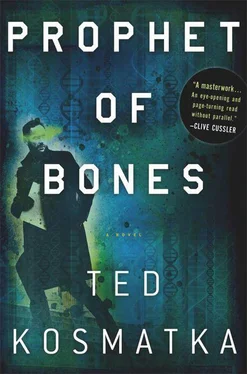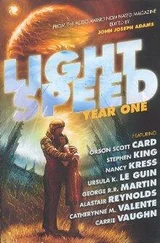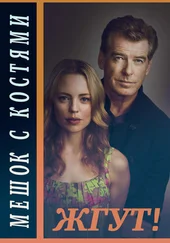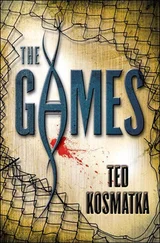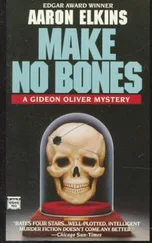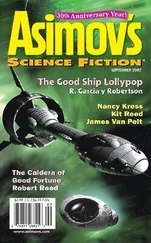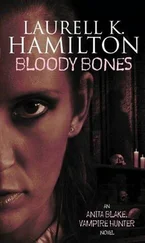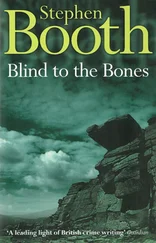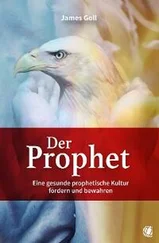Whether their kind had been killed off or subsumed was hardly a matter of much debate anymore. Their genes made fractional contributions to most peoples north of the Red Sea—a small but measurable admixture variously interpreted in context with the great flood or the earliest sojourn beyond the garden.
In the summer between his sophomore and junior years, Paul had gone on a road trip, hitting half a dozen museums, because he’d wanted to see the bones in person. He’d already read what other scientists thought of them. He’d digested their theories, which he knew had changed over time, and would likely change again. Only the bones themselves were immutable.
In second-year anatomy, that same professor had placed five skulls on a table at the beginning of the class.
“Each of these skulls was dug out of the ground on a different continent,” the professor said. “I want you to tell me which continent each skull comes from.”
“How old are they?” someone asked, looking for a hint.
“They’re all relatively modern; the oldest is from the eighteen hundreds. And this one here,” the professor said, touching the top of one of the skulls, “is only a few decades old.”
He looked out at his audience of students. In front of each skull, he placed a small paper sign facedown, so the students couldn’t read them.
“This isn’t a trick question. Each of these skulls belongs to one of the five major racial types,” he said. “Write down the name of a continent for each skull. You have five minutes.”
The students stared. They got up from their desks and approached the skulls. They picked them up and weighed them with their hands. The skulls looked similar to one another in a broad sense, though there were differences. The shape of the jaws varied, as did the shapes of the teeth, the mastoid, and cheekbones. It was difficult to tell how those differences in bone might translate into the soft-tissue appearance.
Each of the students wrote their answers on a small white card.
At the end of the class, the professor flipped the signs over, showing where the skulls were from. One was from Europe, another from Africa, the others from Asia, Australia, and the Americas.
Only Paul had gotten them all right.
“How did you know?” the professor asked him.
“I’m not sure,” Paul said. And it was the truth. Maybe he’d gotten lucky.
“There are computer programs you can use,” the professor said. “You take a dozen craniographic measurements at various points around the skull, and then you plug the numbers into the program. The software takes it from there and spits out an ethnicity, usually with a high degree of accuracy. But it’s hard to tell sometimes with just the naked eye unless you have a knack for it. For some, the eye can do the same complex math that computers can.” He gave Paul an appraising look. “Sometimes the eye is even better.”
Paul nodded. The professor turned, addressing the entire class again. “There is a simple rule of thumb, though it doesn’t always work. If you’re ever in a situation where you need to make a quick educated guess, that rule of thumb is this. When you look at a skull for the first time, ask yourself what the first thing you notice is. The very first thing. What jumps out at you? If the first thing you notice is the nose, the midfacial region here”—he tapped one of the skulls with a ruler—“then the skull is likely Caucasoid. If the cheekbones are the first thing you notice, then the skull is likely of East Asian origin. And if it’s the mouth—a marked subnasal prognathism—then the skull is likely African. So remember: Caucasians, nose; Asians, cheekbones; Africans, mouth. And keep in mind that when using this method, you’ll be wrong about forty percent of the time.”
Paul sat at his desk in his office and stared at his computer monitor. He scrolled down through the images. Saved on his computer hard drive were photographs of all the major anthropological specimens that had been found in the last sixty years. He was searching for one that looked like what he’d seen in Liang Bua. He continued scrolling until he got to the bottom and there were no more skulls to look at. The screen was blank. There was nothing small enough.
Nothing like Liang Bua.
He stared at the screen, and his mind drifted.
There were many skulls in the Westing bone room. Some of them were fantastically old. Others had been wrapped in life as recently as a few hundred years ago. Paul couldn’t look at the skulls without hearing his professor’s rule of thumb: What jumps out at you? And as with nearly all such rules, it was from the exceptions that the most interesting data could be drawn.
There was a loud click and the room went black. The only light came from the glowing computer screen.
Darkness like a gift.
“You’re gonna clog your arteries eating that shit.”
Paul followed Hongbin into the lunchroom, paper bag in hand. He sat with the group. Five researchers hailing from all points of the globe, eating wildly different meals. The lunch table took up one corner of the small glass room. The room was too bright and smelled of industrial cleanser. One wall lined with vending machines, the other with posters. A large sign entreated them to WASH HANDS THOROUGHLY BEFORE EATING. Below that, a smaller sign reminded them that WESTING IS A SECULAR FACILITY. This was both a reminder not to discuss religion in the break room and a mark of distinction, parochial labs having become more common throughout the world in recent years. Paul ate his usual burger and fries.
“Better than that crap you eat,” Paul offered.
“It’s called a balanced diet,” Hongbin said. “You should try it sometime.”
“Balanced? All you eat is Chinese.”
“A billion brunettes can’t be wrong,” Hongbin said.
In days past, the joking might have escalated. Mothers might have been invoked. But they were still going light on him. Paul’s experiences had made him different, like a man returned from the wilderness, or from war—a man who had seen things he would never explain.
“You eating real food,” Paul said around a mouthful of fries. “Now, that would give me a heart attack.” He took a swig of his Coke.
“You see, yet another reason to stick to my usual. I wouldn’t want to be held responsible for your inevitable cardiovascular collapse.” Hongbin tipped his white foam cup toward Paul. “To your health,” he said, then sipped noisily from the straw.
“To my health.”
“Speaking of health, have you talked to anyone in sequencing yet?”
“About what?”
“About anything.”
“Haven’t been up there yet,” Paul said. In the two weeks he’d been back, he’d mostly stayed on his floor.
“So you haven’t heard about Charles?”
“What about him?”
“He’s not coming back.”
Paul’s brow furrowed. “I didn’t know he’d left.”
Hongbin took a bite of his noodles. “Some kind of extended leave,” he said.
“Not what I heard,” Makato chimed in.
“What did you hear?”
“Something different,” Makato said. “A breakdown.”
Strange Charles. Paul took another bite of his burger, considering the news.
Odd things happened in the long tail of the bell curve.
Like Charles.
“How long has he been out?” Paul asked.
“Since just before you got back.”
They finished their meals. Paul crumpled up his bag and tossed it into the trash on the way out the door. “I’ll catch up,” he told them, then stooped and pretended to tie his shoe.
For Paul, the last couple of weeks had been about pretending. He’d driven to work each morning, pretending life was normal, carding himself through security doors like nothing was different. He nodded to people in the halls, simulating his old life.
Читать дальше
